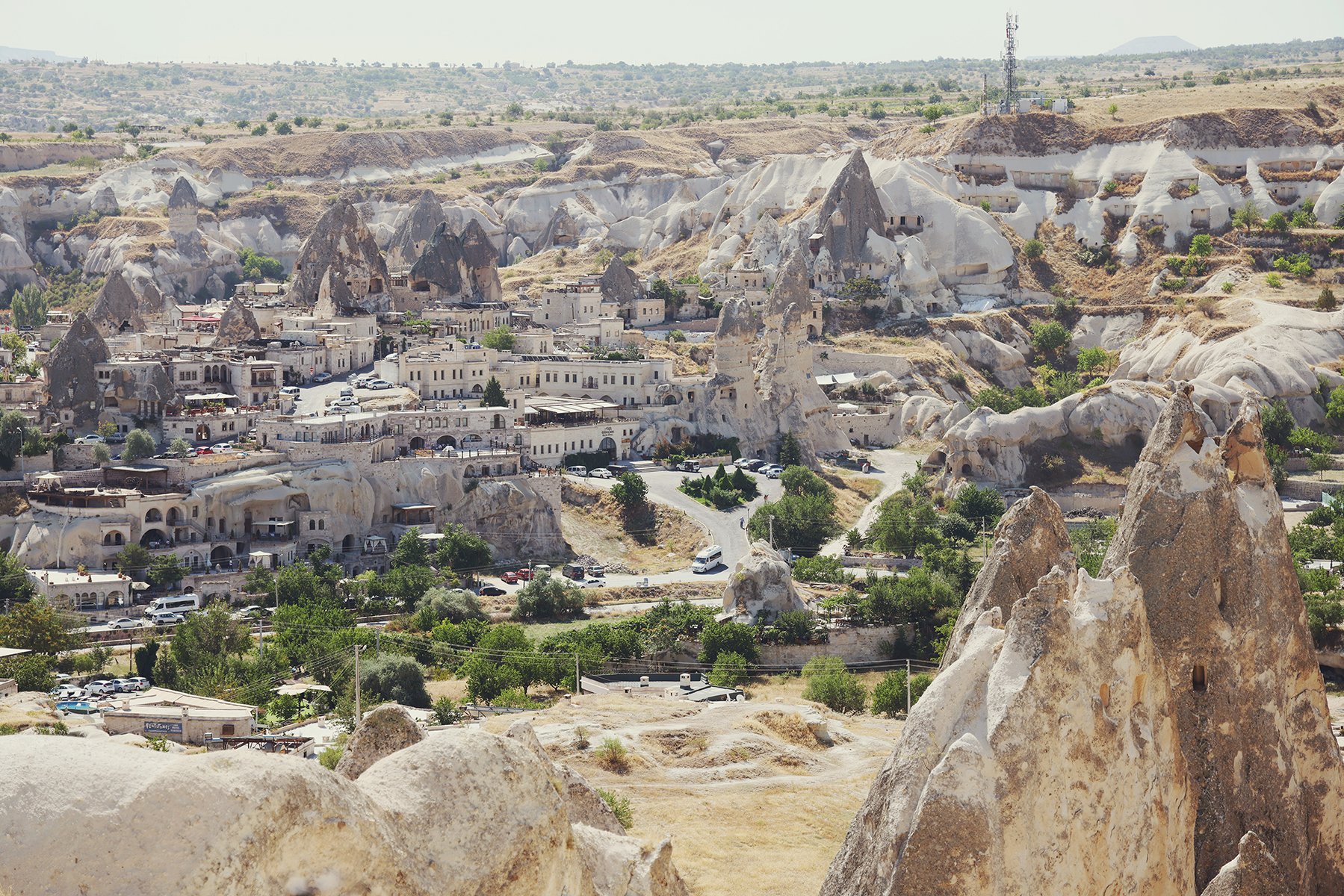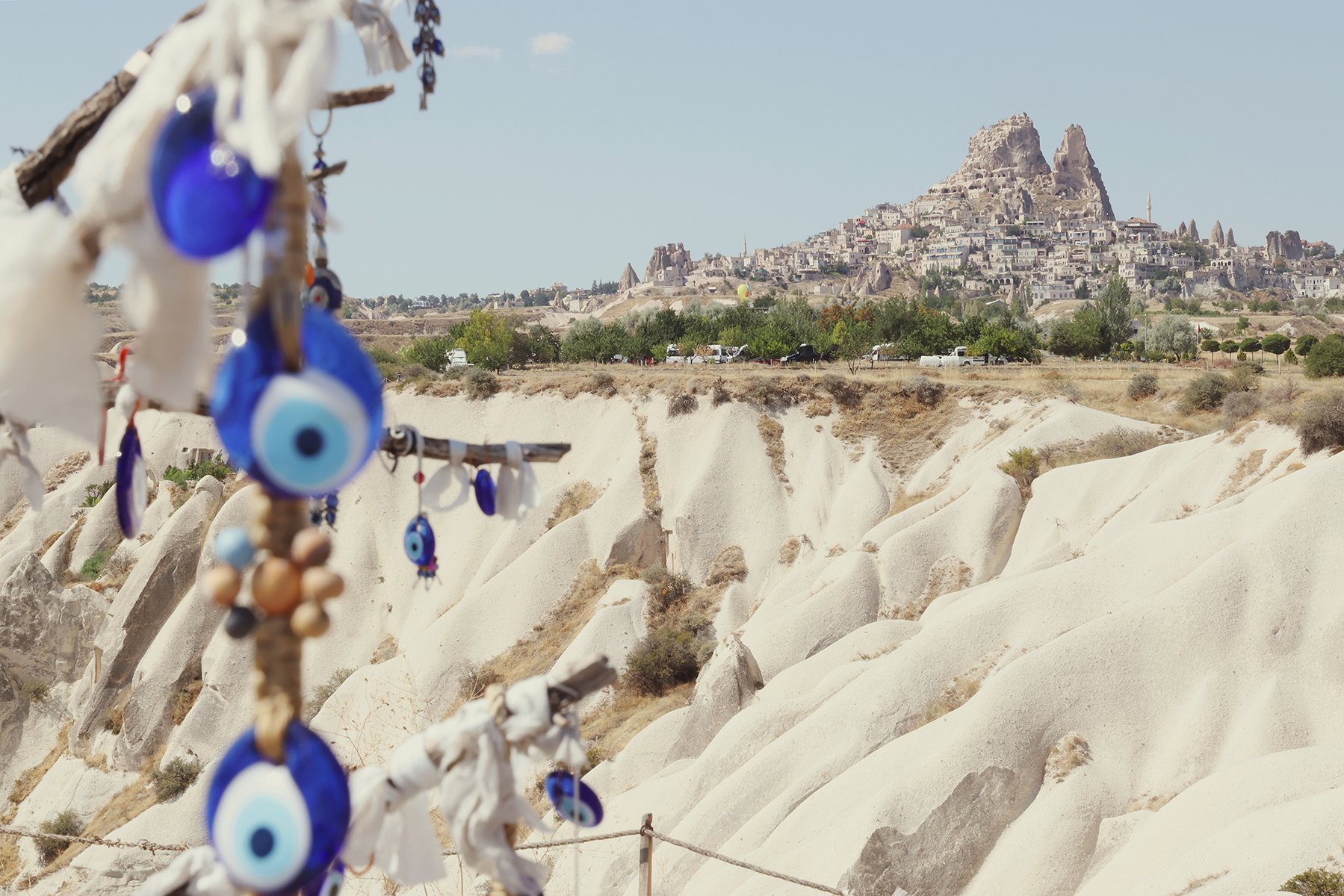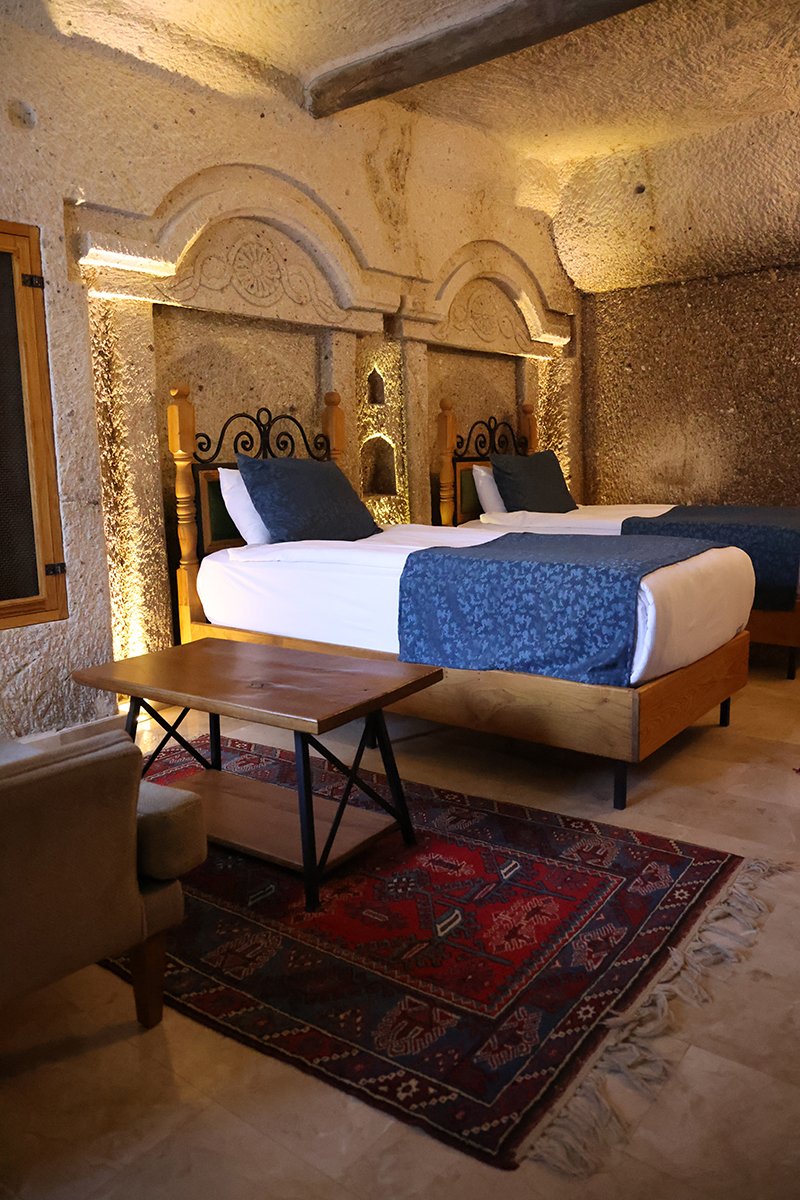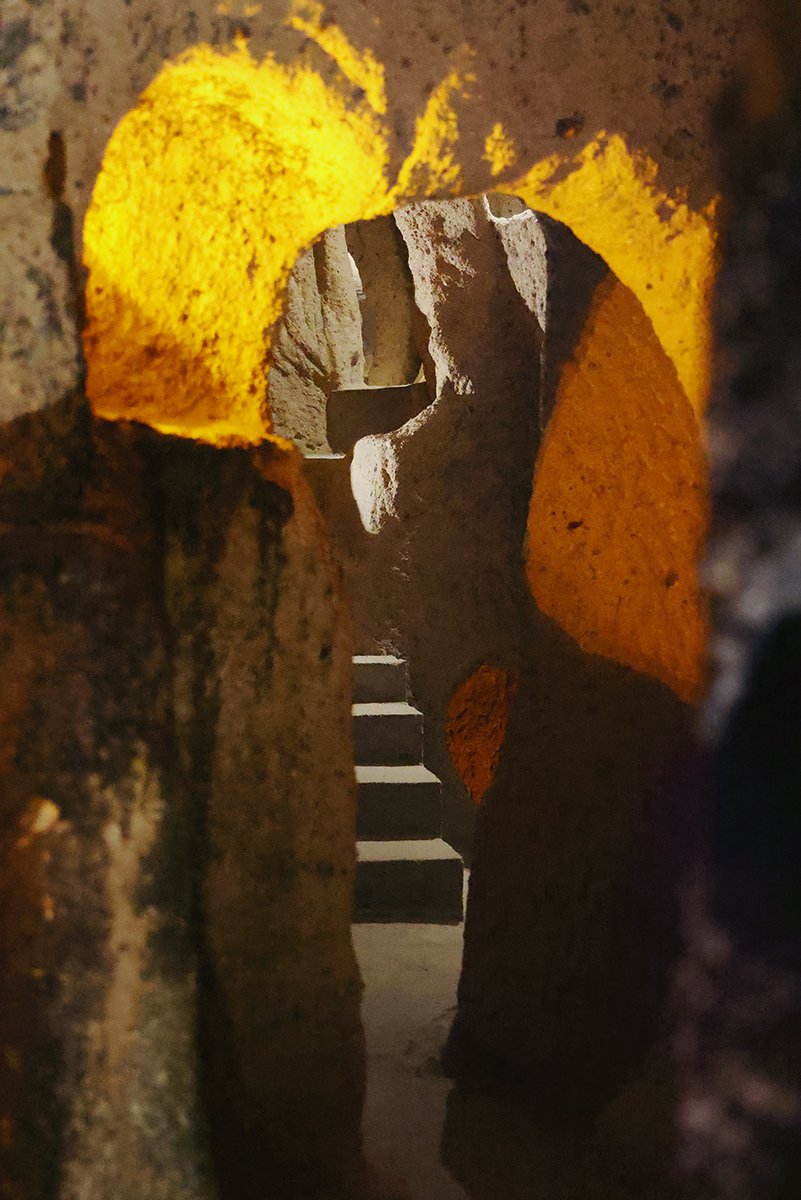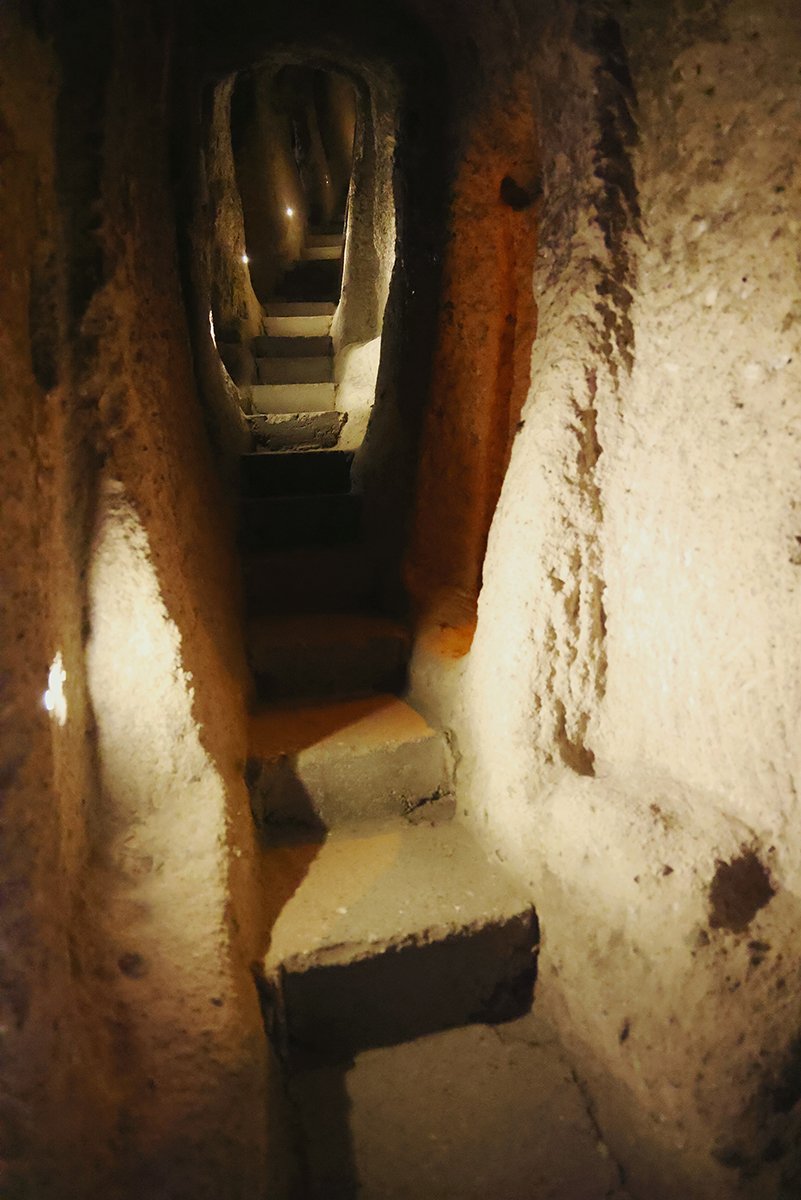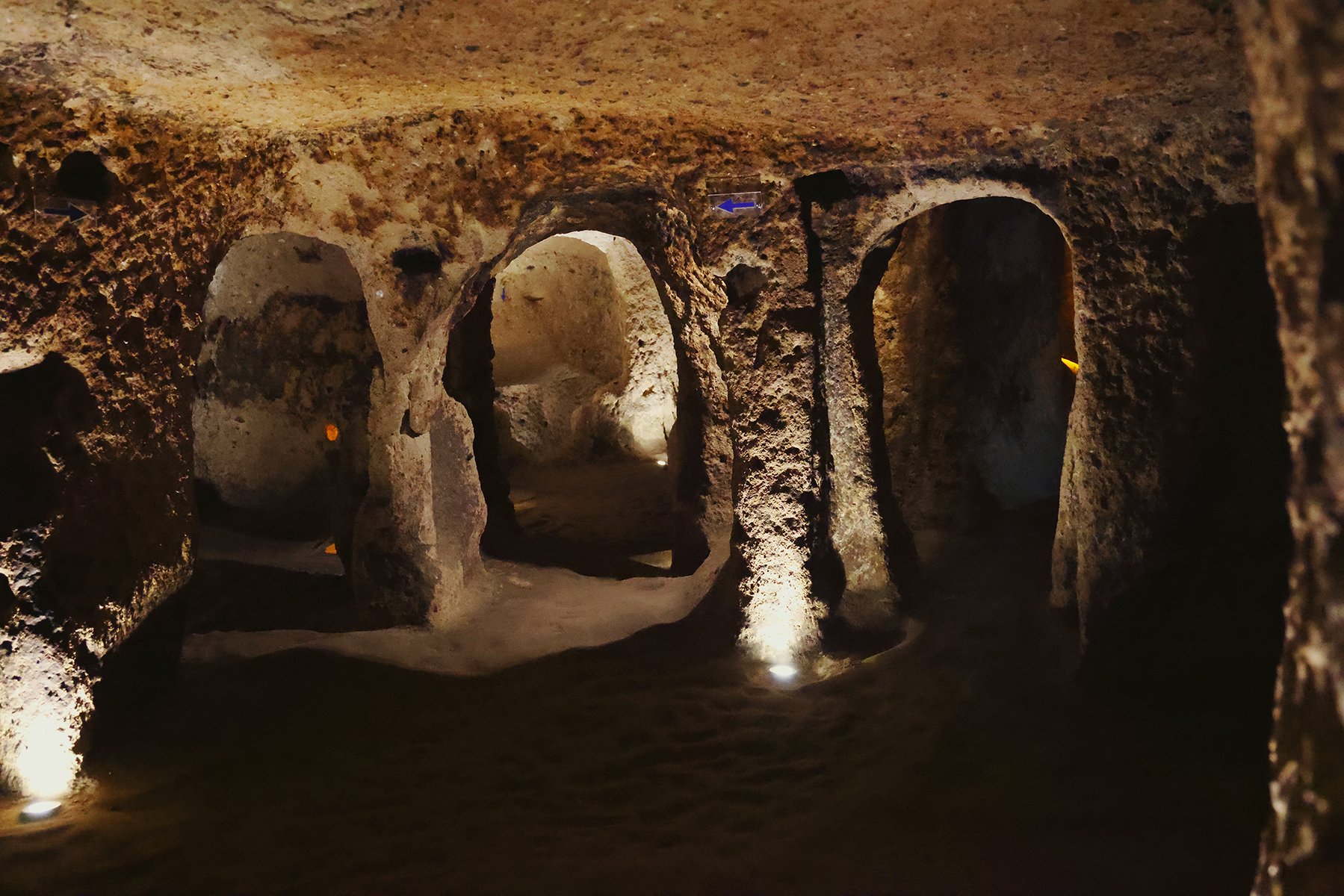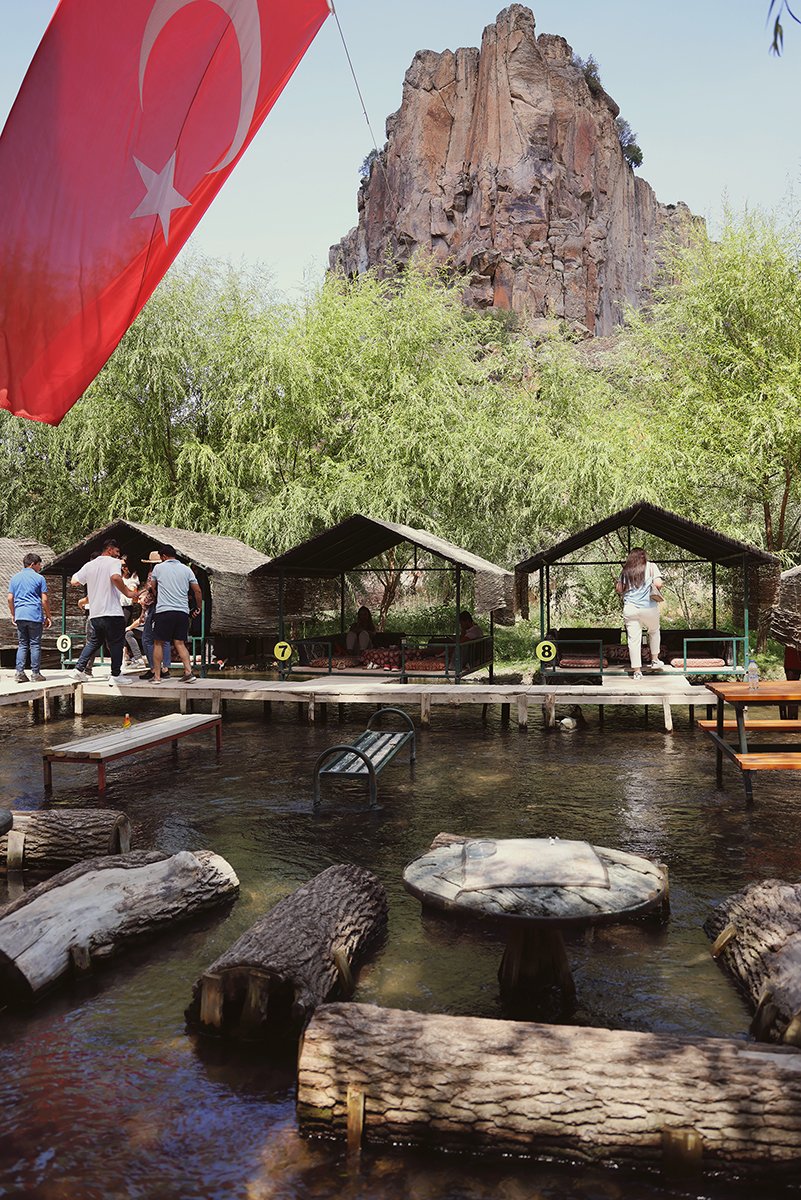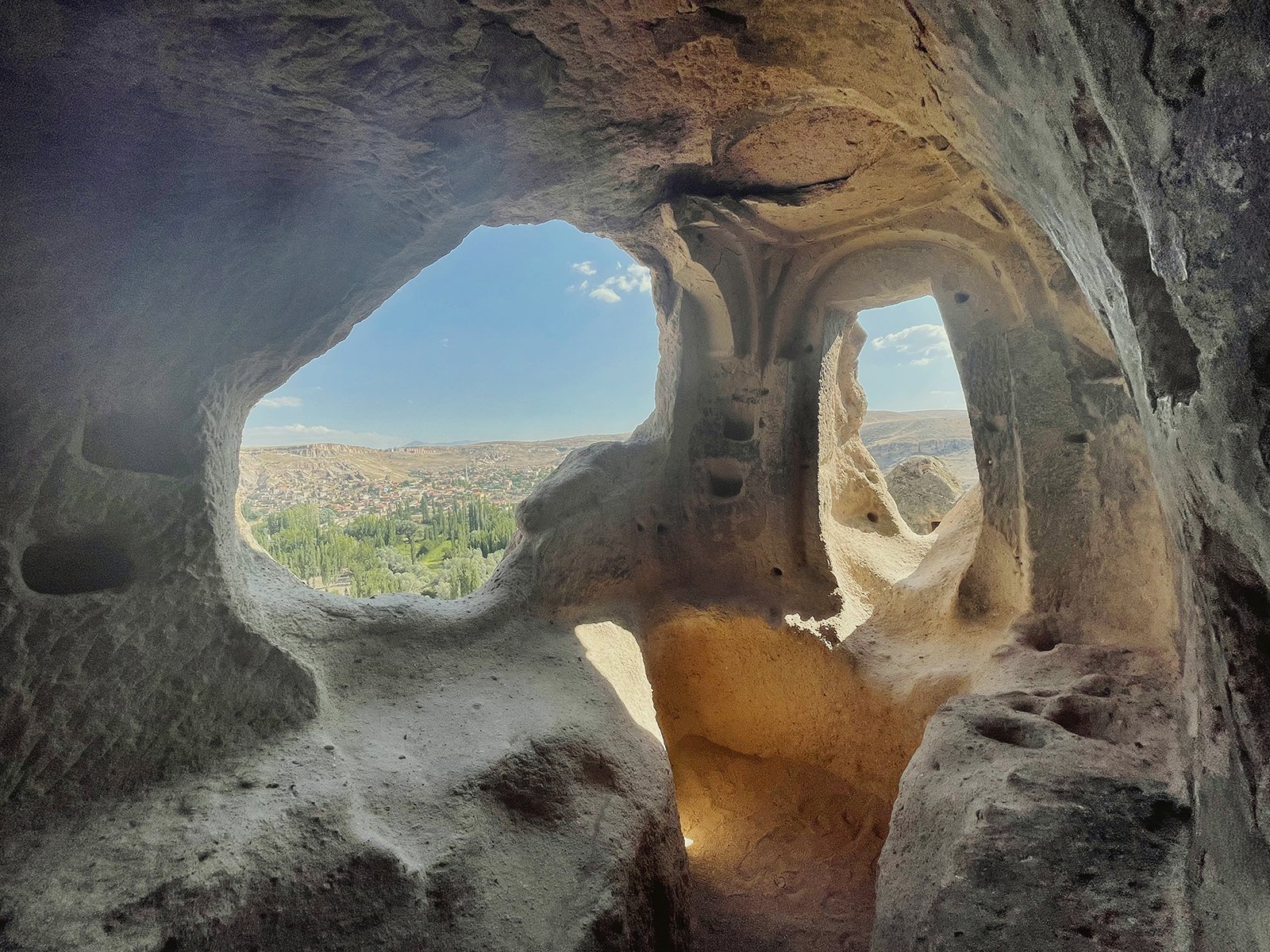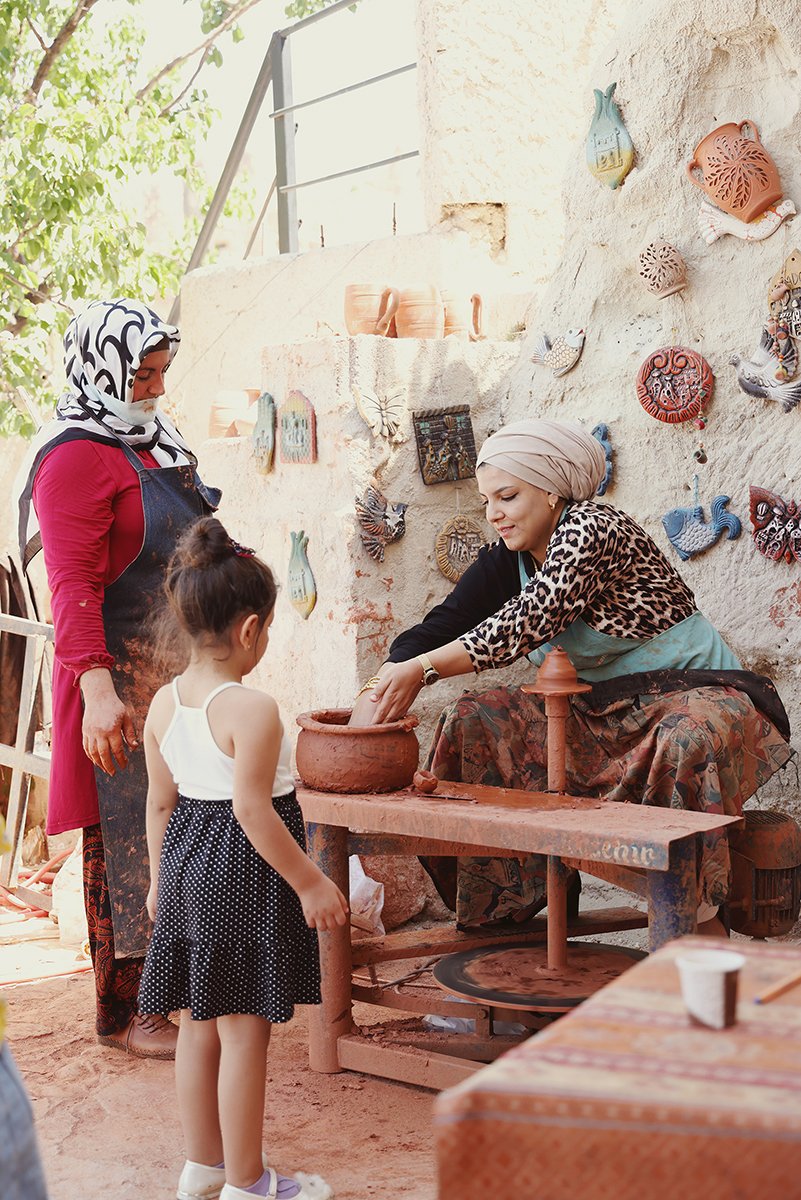Cappadocia
The famous fairy chimneys in Cappadocia
Cappadocia is a destination unlike any other. Volcanic rock forms were long ago adapted into cave homes by Anatolia’s ancient peoples. The strange tower-like formations, turned habitation, are so enchanting (especially when the windows glow in the evening) that they have been dubbed “fairy chimneys”.
George Lucas filmed part of Star Wars here and it’s easy to see why he’d go the distance. The landscape is so unearthly, you could easily be exploring another planet.
When I first heard of Cappadocia, the idea of ancient homes carved into the rock fascinated me. I expected to see and explore some of these cave dwellings, but I didn’t realize before arriving that the entire region was full of them. Everywhere in Cappadocia are villages, homes, castles, monasteries, convents, and churches excavated directly into the naturally breathtaking landscape. The Anatolian people have been utilizing this clever technique for thousands of years, right up until modern times when, in the 1950s, new building codes put a stop to it.
A camel rests above Pigeon Valley.
It is now illegal for people to have permanent residence in the excavated homes so famous to the region, but it is legal to use the caves for commercial purposes, such as hotels and shops. This means most of this odd historic architecture is still very much in use and makes for an incredibly unique experience for visitors to the region.
The famous castle of Uchisar.
A breathtaking example of the region’s iconic, excavated living, is Uchisar castle. The outermost point of defense for the region of Cappadocia, Uchisar rises from its base 60 meters, towering over the surrounding landscape. Uchisar is riddled with homes and tunnels and has been inhabited by locals for thousands of years, functioning like a natural fortress and tenement block.
Cave Dwellings
The porous stone that forms the cave homes in the region is ancient compressed volcanic ash and naturally “breathes”, providing excellent ventilation. These rock hewn homes stay refreshingly cool in the hot Turkish summers and offer perfect insulation during the cold months.
Cappadocia is full of cave hotels, and this is a must if you want to experience one of the most unique offerings of the region. These hotels are plentiful, and charming, often utilizing traditional Anatolian designs.
I stayed at Lunar Cappadocia, a cave hotel tucked into the ridge above the main thoroughfares of Goreme. Its location offered stunning views but was conveniently close to everything. You can book your own stay at Lunar Cappadocia on Booking.com by clicking here if you like.
Dinner and sunset at Seten in Goreme
I ate at Seten on my first night in Goreme because it had been recommended by the owner of the hotel where I was staying. I loved it so much that I came back with friends later in the week. The view at sunset and the ambiance were unforgettable, and the staff and cuisine were incredible.
If I could recommend anything for travelers to the region, it would be the traditional Cappadocian dish and staple of Anatolian Cuisine, Testi Kebab or “jug kebab” which is named after the terra cotta jug in which it is cooked. When served, the dish must be cracked open and the marinated ingredients are then poured out on the plate.
Sunset over Goreme
Cappadocia After Dark
As night falls over Goreme the evening call to prayer sounds. After dinner, Goreme’s streets were still very much alive and I went shopping with some friends. A shop selling trinkets in front caught my eye because of the unusual jewelry displayed and after exploring inside, we met the owner who explained how he sells antique tribal jewelry and also fashions his own designs with motifs native to the region. We conversed with him long into the night. He offered some of his homemade wine and showed us his collection of turkish rugs, explaining how the traditional pigments are derived and the cultural symbolism behind the patterns.
We spoke at length about the changes in the world post digital revolution and the routes young people now must take to establish themselves. We talked about local culture in Goreme and how travelers experience unfamiliar places for the first time. And because it was now very late, he gave us each respectively a ride to our hotels.
Goreme at night.
Lunar Cave hotel in Goreme by night
I had wanted to do the moonlight tour of the valley because I had heard it was incredible, however, the moon phase was not right so the night tour was canceled. A local friend generously offered to drive me to some areas they knew, so that I could see the famous Cappadocian landscapes by night. I got way more then I expected.
Swords Valley (Kılıclar vadisi)
Convent in Swords Valley
The stars were bright, and the night was peacefully quiet. We explored the spooky dark halls of a convent hewn from the rock, hiked in Love Valley pondering the mysteries of the universe, visited a local bar and danced, and went to a secret overlook to see Goreme’s lights from above. I got back barely in time to sleep maybe two hours, pack and catch my morning flight to Istanbul.
A church inside the Convent.
The “Valley of Love” in moonlight
In Cappadocia, you won’t wander far without encountering the incomparable Turkish hospitality which is magical in and of itself. Locals are genuinely warm. Shopkeepers always offer tea. You can’t even get lost, someone will stop and ask what you need. It's easy to find conversation and company, to find a ride or a charge for your phone because of the accommodating and thoughtful way of life that is pervasive in Turkish culture.
Turkish hospitality is unsurpassed throughout the world, and you will particularly feel it here in the magical region of Cappadocia.
Highlights of Cappadocia
Rose Valley / Red Valley
Kaymakli and Derinkuyu
Hike into the Ilhara Valley
Selime Monestary
Open air museum in Goreme
Sunset horseback riding
Sunrise hot air balloons
Night hike with a local
Rose Valley and Red Valley
Geologists have pondered the remarkable landscapes of Cappadocia, with its fairy chimneys, dramatic canyons, and valleys where massive phallic columns reach for the sky. Testing of the stone and soil has determined that these surreal sculptures are the result of a giant natural anomaly. Ash from an immense and ancient volcanic eruption was shaped by the elements and further eroded over time, creating Cappadocia’s strange and whimsical formations.
Kaymakli and Derinkuyu
Cappadocia is home to several famous ancient subterranean cities, as much as eight stories deep, where extensive underground tunnels link a labyrinth of homes. The most famous of these cities are Kaymakli and Derinkuyu.
The Ihlara Valley
Dubbed the Grand Canyon of Cappadocia, the sheer rock faces of the Ihlara Valley canyon are riddled with churches carved from the cliffs in the typical style of the region. The area became a magnet for monastic retreat in the 7th century AD as monks flocked to this haven to live removed from the world. To access this secret enclave we descend 400 steps down into the canyon.
Waystops in the valley serve fresh caught fish and offer dining sitting in the river, a brilliant idea which is deliciously refreshing in the heat of the Turkish sun.
Selime Monastery
At the end of Ihlara Valley, Selime Monastery rises like a sentinel. This castle hewn from natural volcanic rock, represents the largest religious structure in Cappadocia. Selime Monastery encloses vast kitchens, stables, living quarters, secret tunnels and even an expansive, columned church carved out within.
Its prominent position at the end of the Ihlara Valley, with sweeping views of the surrounding territory, made it an excellent military outpost.
Habitation at this ancient site dates back at least to the 8th or 9th century BC. There are indications of many layers of early civilizations present, among them; Hittite, Persian, Roman, Early Christian, Byzantine, Seljuk Turk and Ottoman.
In the 10th and 11th centuries, Selime Monastery served as a Caravanserai, (a sanctuary for caravans) providing refuge and protection for those journeying along the Silk Road. Camel caravans would stop at Selime, where there was a large bazaar, and camels were kept in the central part of the monastery for protection.
Selime Monastery has remained abandoned since the 16th century, but now this stunning ancient fortress is a popular tourist attraction.
Goreme Open Air Museum
Göreme Valley was once an ancient burial valley, however, there followed an era of Christian settlement in the region as Christians fled increased persecution in Roman territories. During the baroque era, Cappadocia became a haven for monastic life, bringing pilgrims and thriving christian communities.
Göreme Valley is home to over 60 churches and 45 refractories hewn directly from the rock. Several of these surreal sanctuaries are renowned for paintings still well preserved and notable for their intricate sculptural qualities.
Just down the road from Goreme Open Air Museum, I stopped at a pottery outpost where the family of a local artisan makes and sells products. Here, by request, they will even teach you to throw on a wheel. The local soil is rich with clay, so pottery products are one of the unique offerings of the region, and much of the dishware you see in the area is made locally.
Sunset Horseback Riding
While the surreal landscapes of Cappadocia are exquisite, there is so much you will not see from the road. For an unmatched view of Cappadocia, I highly recommend taking a sunset horseback tour. The tour takes the experience of the surreal landscape over the top, allowing you to explore stunning formations and terrain you would not otherwise see.
DO NOT TAKE AN ATV TOUR, here is why: The machines are damaging to the natural environment and the ancient archeological sites. Locals are trying to preserve the region’s charms by restricting ATV use and we as tourists can help by not giving our money to those tours. Horses are how people would have traveled for centuries and these tours will give you time to enjoy the breathtaking surroundings and experience a sense of place and history. You will be able to access places that you can’t get to on a vehicle, even an ATV.
The horseback tour provides stunning views of the red valley, Goreme and Uchisar. You do not need to have horseback riding experience to take the tour.



